- Sport & Abenteuer Reisen
- Trekking Reisen
Overview
A fascinating and long trek that starts in Spiti, goes over 5 passes, leads past two mountains and many nomadic camps. Four of the five passes are over 5000 metres and the highest elevation is Parang La, a 5578 metre high pass on which a glacier borders. The trekking tour offers both large inclines and a few flat sections and gives us an insight into the culture of the Buddhist people here!
If we are lucky, we will spot wild horses, marmots, the species of the blue sheep and maybe even a snow leopard!
Program
Day 1 Arrival in Delhi, in the evening drive to Manali on Volvo bus 585 km
Pick-up service from the airport to our hotel (overnight stay in the hotel, air-conditioned).
Today we visit the main attractions of Delhi (Red Fort, Jama Masjid Mosque, Lotus Temple, Qutab Minar). In the evening we set off for Manali. (Overnight stay on bus) B/-/-
Day 2 Manali Recreation Day and local sightseeing tour 2050 m
In the morning we reach Manali and check into our hotel. Today is for rest and some acclimatization to height. We enjoy the green mountain landscape of Manali and later go on a small sightseeing tour. (Overnight stay at the hotel) B/-/-
Day 3 Manali to Kaza 3600 m (219 km)
Today we have a long and exciting drive through the high mountain desert of the Lahaul valley to Spiti. After crossing the Rothang Pass, we will be on a jeep road without any civilization near by. Only after the 4550 m high Kunzum Pass we pass the first small villages. (Overnight stay at the hotel) B/-/-
Day 4 Spiti Sightseeing Tour
Today we take a small monastery and village tour through the Spiti valley and visit the villages of Dhankar and Tabo to see the most famous monasteries in the region. We can also take a small acclimatization walk to Lake Dhankar. (Overnight stay at the hotel) B/-/-
Day 5 Visit to Ki Monastery and the village of Kibber, overnight in Kibber
Today we visit the famous Ki Monastery. It is the largest monastery in Spiti and it is worth taking part in the daily morning prayer and tasting the butter tea! Kibber was for a long time the highest permanently inhabited village that had electricity and was connected by road. (Overnight at Homestay) B/-/D
Day 6 Acclimatization
An important day to continue adjusting to the height. We take a hike to Taschigam, a neighbouring village and will spend another night at 4200 m in Kibber. (Overnight at Homestay) B/L/D
Day 7 Kibber to Thalda 4875 m (7 hours trek)
The first day of our trek. It goes down to the Parang Chu Gorge. Then we cross the river to get up to the green cultivated land around Dumla. We climb further up, where we can admire the Kang Nilda Peak (6303 m) in the southeast. Also in the northeast you can see some peaks that rise high above the Kunzum Pass. After that, our path winds a little upward to our camp (4875 m). (Overnight in a tent) B/L/D
Day 8 Thalda to Boroghlen (Base Camp) 5180 m (7 hours trek)
Today we have to walk carefully over the slippery ground of the moraine of sand and debris. We descend 550 m into the Parilungbi Gorge. Then we follow the river to Jaghta. Afterwards, the path goes steeply up over the moraine. At the end of the difficult ascent there are two glacial valleys: one to the south, the other to the north. We follow the northern moraine and reach our camp (5180 m). (Overnight in a tent) B/L/D
Day 9 Boroghlen to Parangla Pass (5578 m) to Kharsa Gongma 5150 m (8 hours trek)
Today it is exhausting for all of us. It goes over snowfields and continues over rubble up to Parang La (5578 m) . At the top of the pass we have a spectacular view of the peaks of Lahaul and Ladakh. The river Parang Chu, which originates at the southern slopes of Parang La, can also be seen from here. (Overnight in a tent) B/L/D
Day 10 Kharsa Gongma to Thakote 4900 m (5 hours trek)
We cross the river Pare Chu near our camp and follow the river on the right side. Now the valley is wide. Sometimes we walk on the riverbed, sometimes just above the river. We meet temporary settlements of the nomads and continue to our camp, where we have to cross some tributaries. (Overnight in a tent) B/L/D
Day 11 Thakote to Norbu Sumdo 4750 m (7 hours trek)
A walk along the right side of the river until we reach the place where another river merges with the Para Chu. Here we have to cross the river and continue to the valley to our right hand. As we walk up the valley, the dusty landscape changes to a delicate green. Tibetan nomads will greet us. (Overnight in a tent) B/L/D
Day 12 Norbu Sumdo to Chuntung at Lake Tsomoriri 4542 m (4 hours trek)
A wonderful and exciting day of trekking. Here the landscape changes dramatically. We walk through grass and sand and the valley continues and goes on. We cross a stream and finally reach Lake Tsomoriri. The lake is 24 km long and 6 km wide. You can see the Changpas (nomads) with their goats, sheep and yaks near the lake. In addition, you can spot a variety of wild animals if you are lucky. (Overnight in a tent) B/L/D
Day 13 Rest day
Today we stay in our camp at Lake Tsomoriri and use the break to relax, enjoy the scenery and maybe even wash a little laundry. (Overnight in the tent) B/L/D
Day 14 Chuntung to Karzok 4540 m (6 hours trek)
Today our hike always goes along the nearby lake until we meet the small settlement of Karzok, which we can explore later. (Overnight in a tent) B/L/D
Day 15 Karzok to Yalung Nyauling Pass (5450 m) to Gyama (5100 m) (7 hours trek)
Today we enjoy the ascent of a pass again! It goes steadily up to 5450 m and we enjoy the view of Lake Tsomoriri. After climbing the pass, it is a two-hour short descent to the camp. (Overnight in the tent) B/L/D
Day 16 Gyama to Kartse La (5300 m) to Kyamayuru La (5410 m) to Rajung Karu (4900 m) 6 hours
Today we handle two passes. Since we are already at high altitude, these passes seem to us rather like small hills. On the way we meet shepherds with their herds of goats and we reach a Tibetan nomad camp. That is also or destination. After a short rest, we can visit the settlers in their tents (overnight in the tent) B/L/D
Day 17 Rajung Karu to Kongka Pass (4900 m) to Nuruchen 4500 m 4 hours
A contemplative day. First up to Konka La and then down to the abandoned village of Nuruchen. (Overnight in the tent) B/L/D
Day 18 Nuruchen to Lake Tsokar (4540 m) 6 hours
Our last stage of the day is a little easier again. We enjoy the tranquil hike along Lake Tsokar and find the opportunity to observe rare bird species. We camp at the nearby lake. (Overnight in the tent) B/L/D
Day 19 Lake Tsokar to Leh by jeep (4 hours)
Via the Tanglang La, we take a jeep into the Indus Valley and past Buddhist monasteries to Leh. We will visit the Thiksey Monastery on the way. (Overnight stay at the hotel) B/-/-
Day 20 Leh Sightseeing
Today we explore on foot the sights of Leh (overnight in the hotel) B/-/-
Day 21 Flight to Delhi and onward travel home
We will take you to the airport in the morning
Services
- 1 x Hotel Delhi, 1x Hotel Manali, 2x Hotel Leh, 2 x Inn Kaza, 2 x Homestay Kibber with breakfast in a double room
- full transport and transfer (Delhi-Manali Volvo bus, air-conditioned)
- Sightseeing without admission in Delhi, Manali and Leh
- Trained trekking guide
- Cook and helper
- Load horses
- 12 nights accommodation in 2-man tents
- Kitchen tent
- Dining and staying tent
- Toilet tent
- 12 days full board during the trek (breakfast, lunch packages, dinner and snacks)
- Water filtered during the trek
- Flight Leh-Delhi
International FlightVisaadditional meals and drinks
Highlights

Tsomoriri Lake 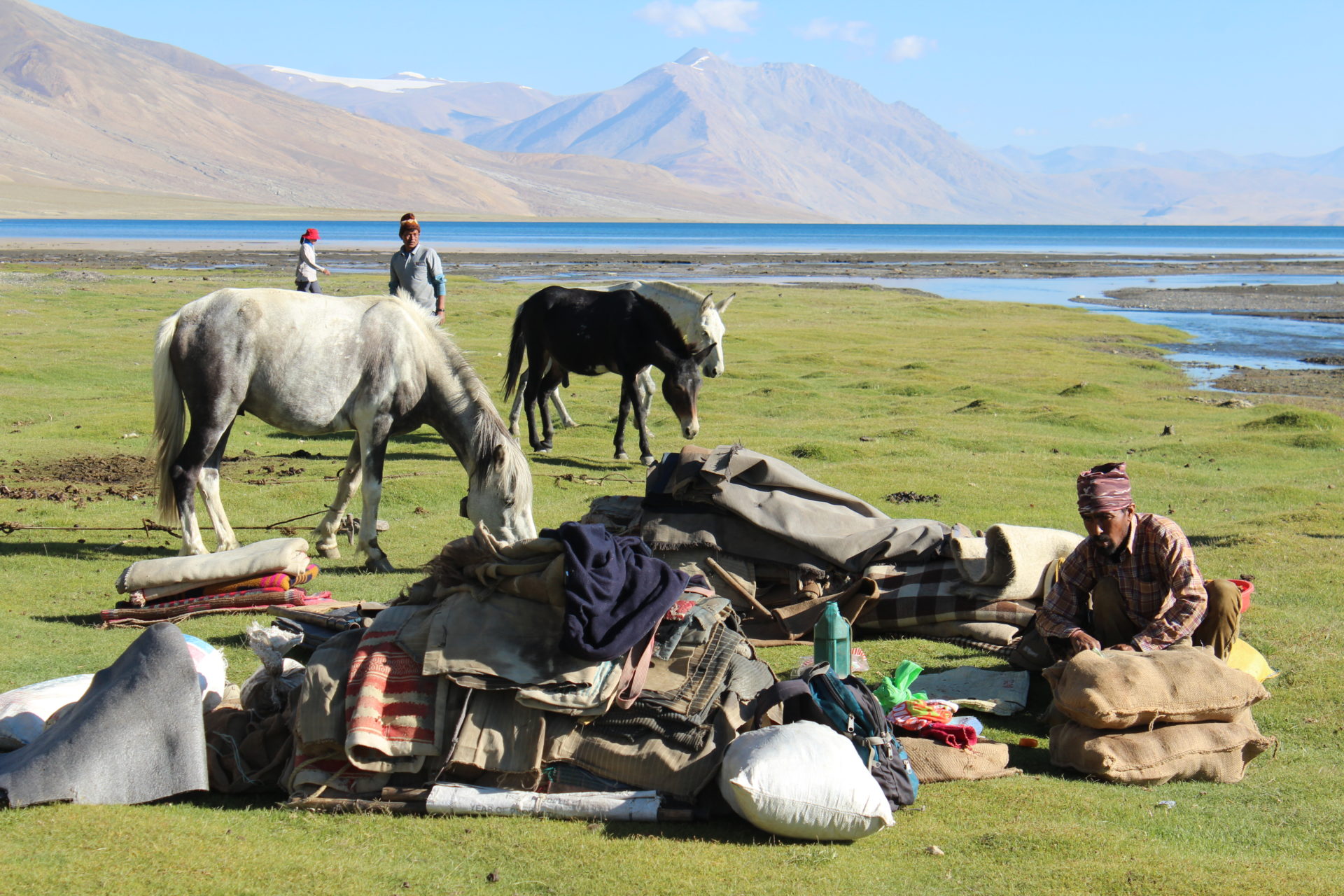
Camp 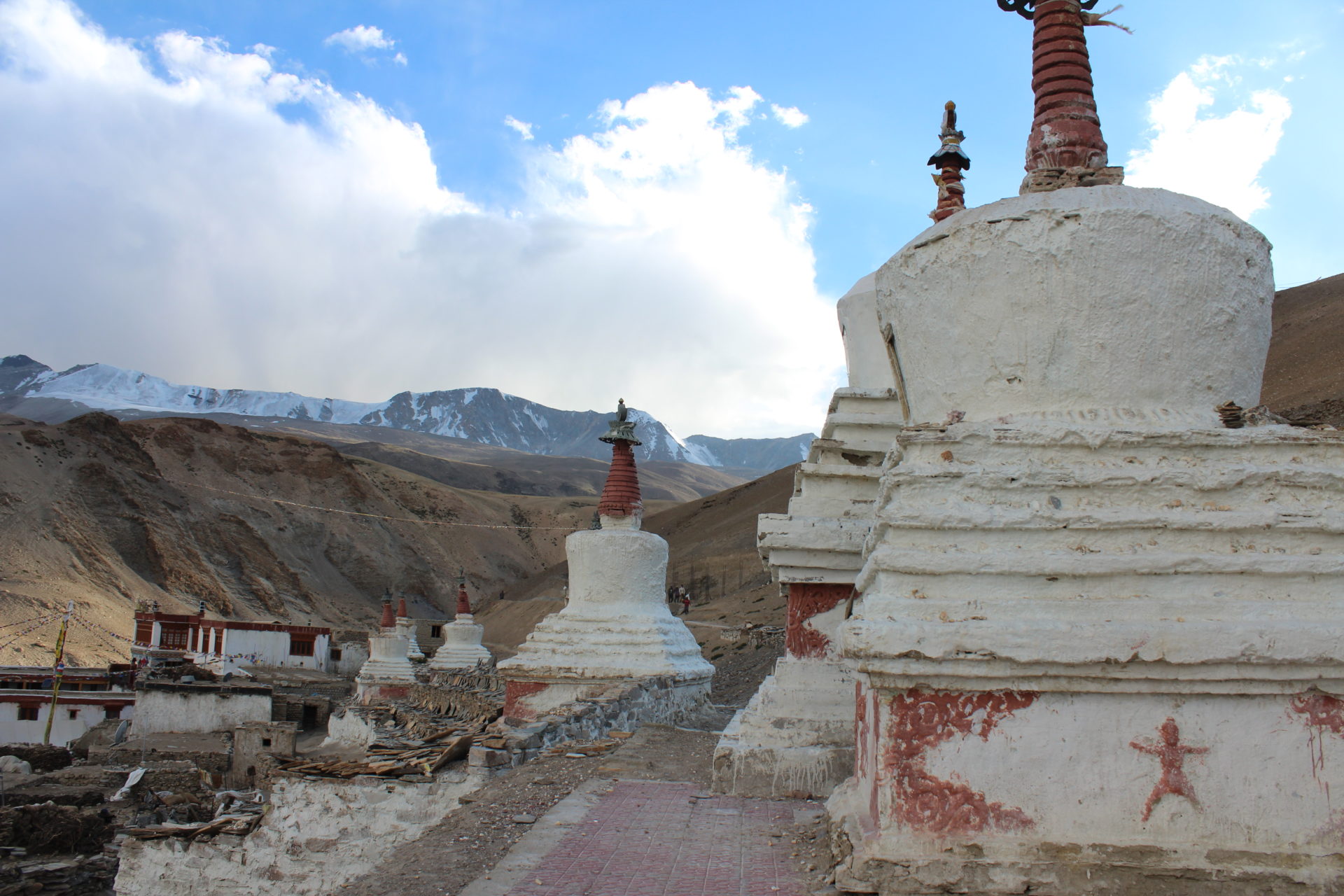
Karzok 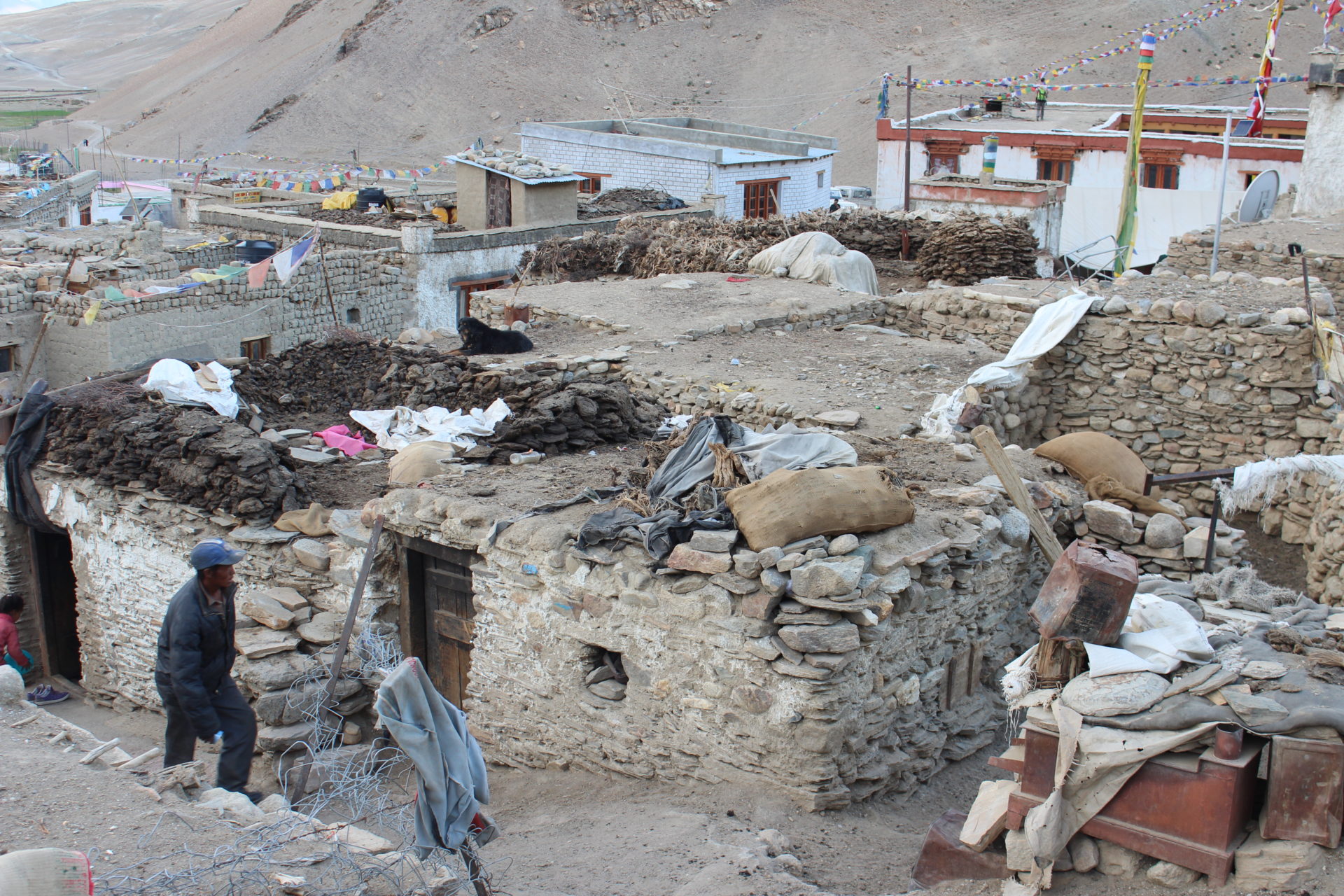
Karzok 
Rest Day 
Pass 
Horses 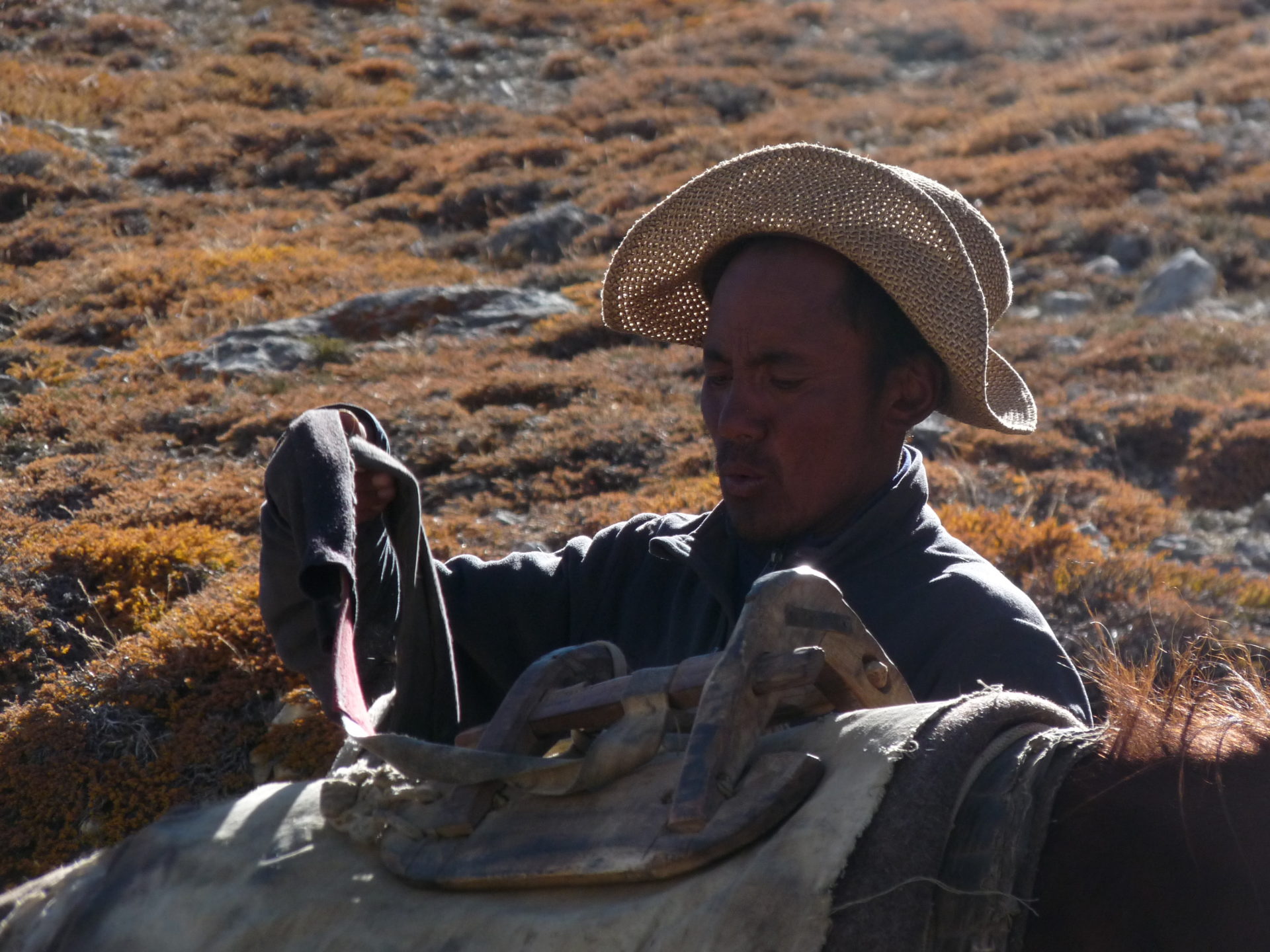
Ladhaki Horseman 
Cooking Together 
Our Camp 
Nomade Camp 
Nomade Camp 
Ladakh Trek 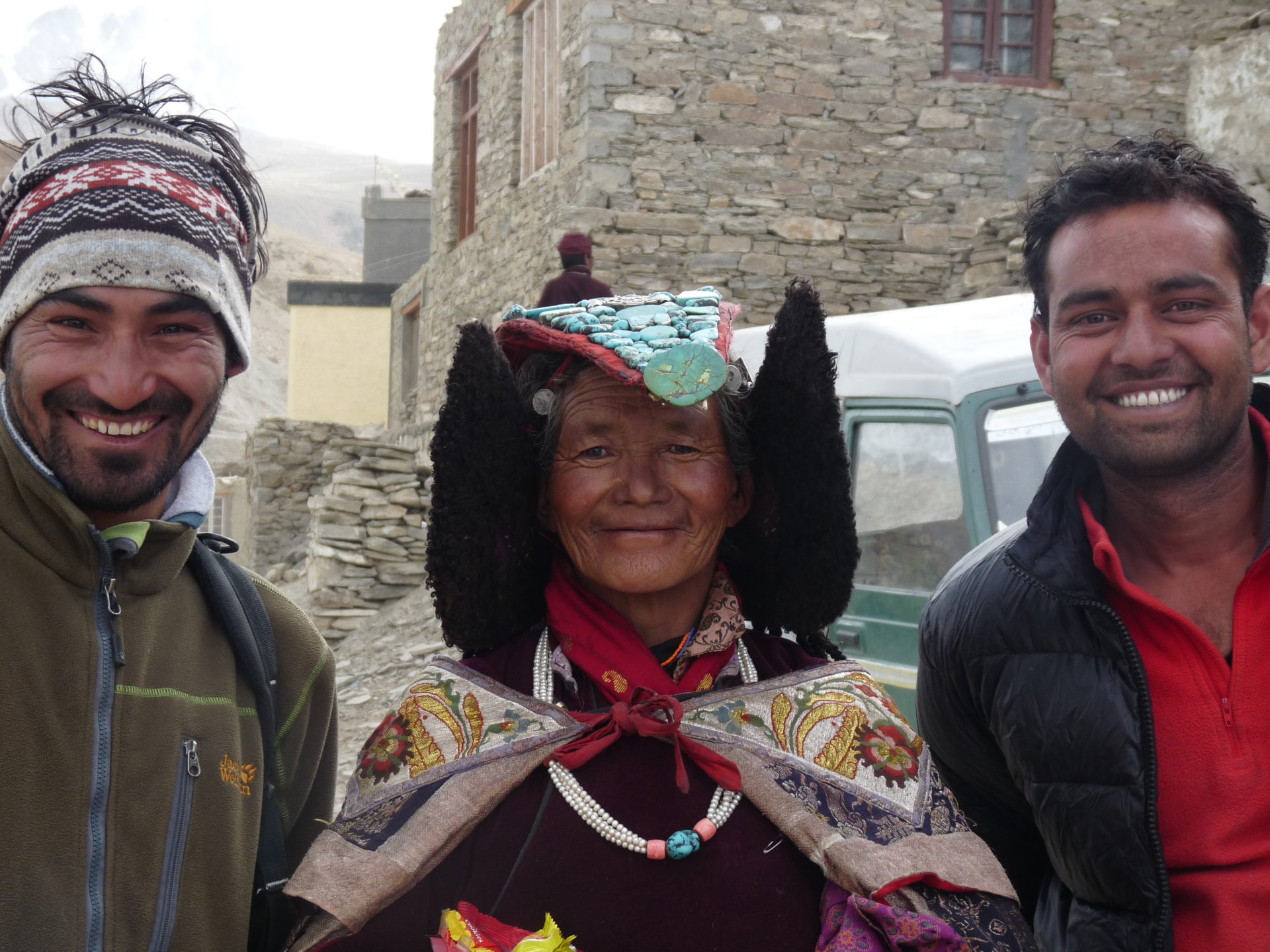
Lokal Woman in Karzok 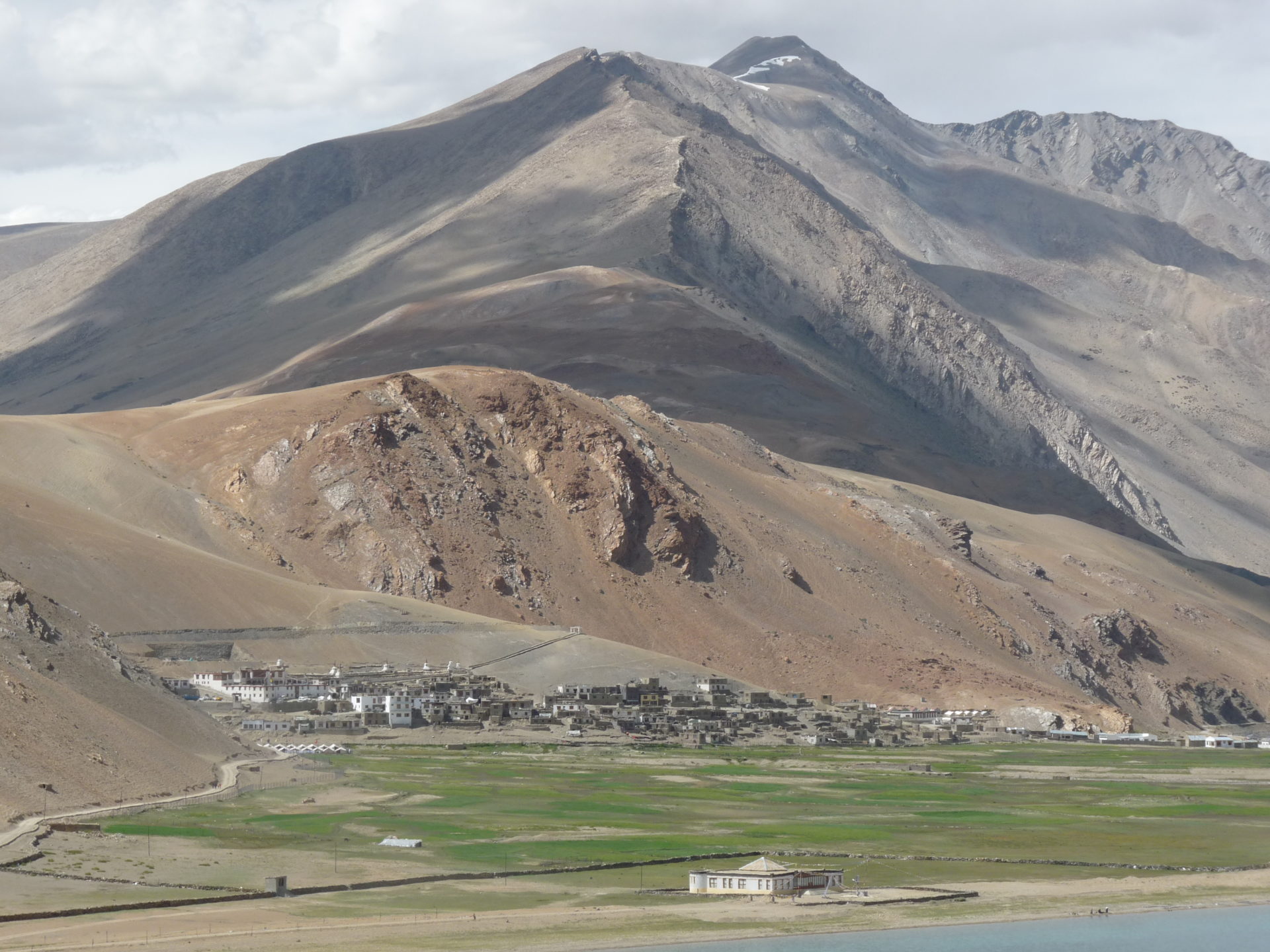
Karzok 
Tsomoriri Lake 
Camp 
Marmot 
Sumdo Numdo 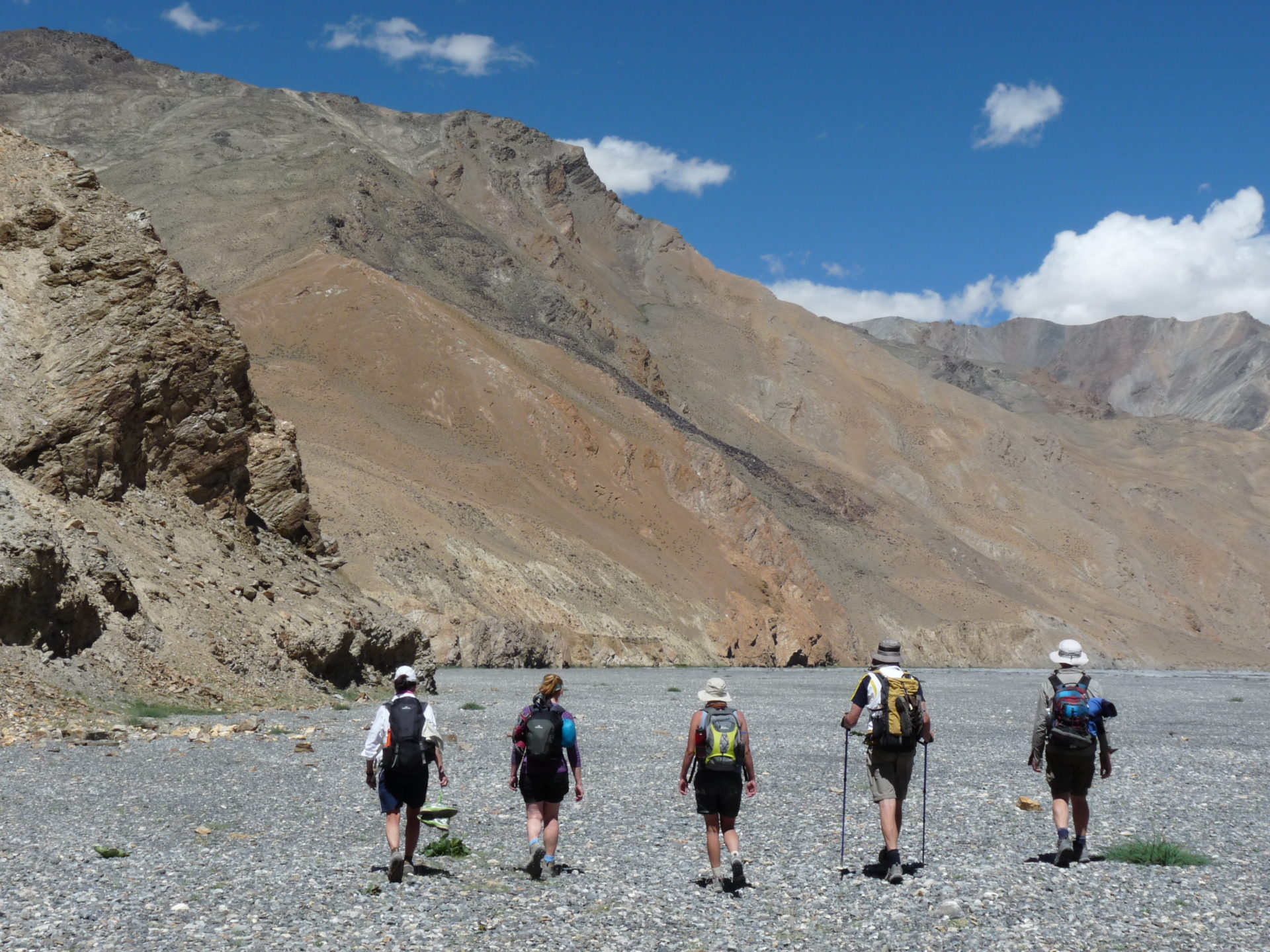
Trekking 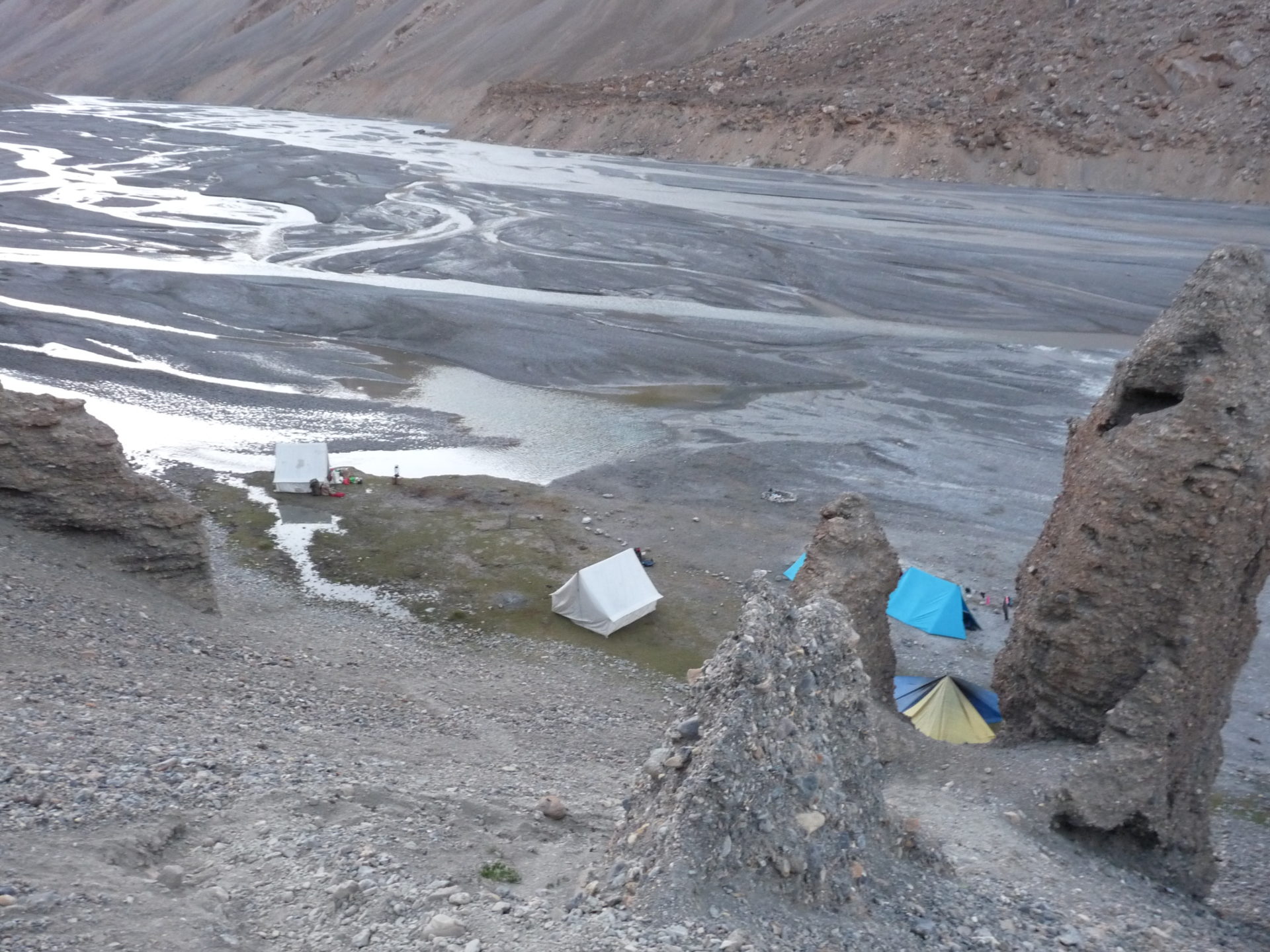
4. Camp 
River Crossing 
river Crossing 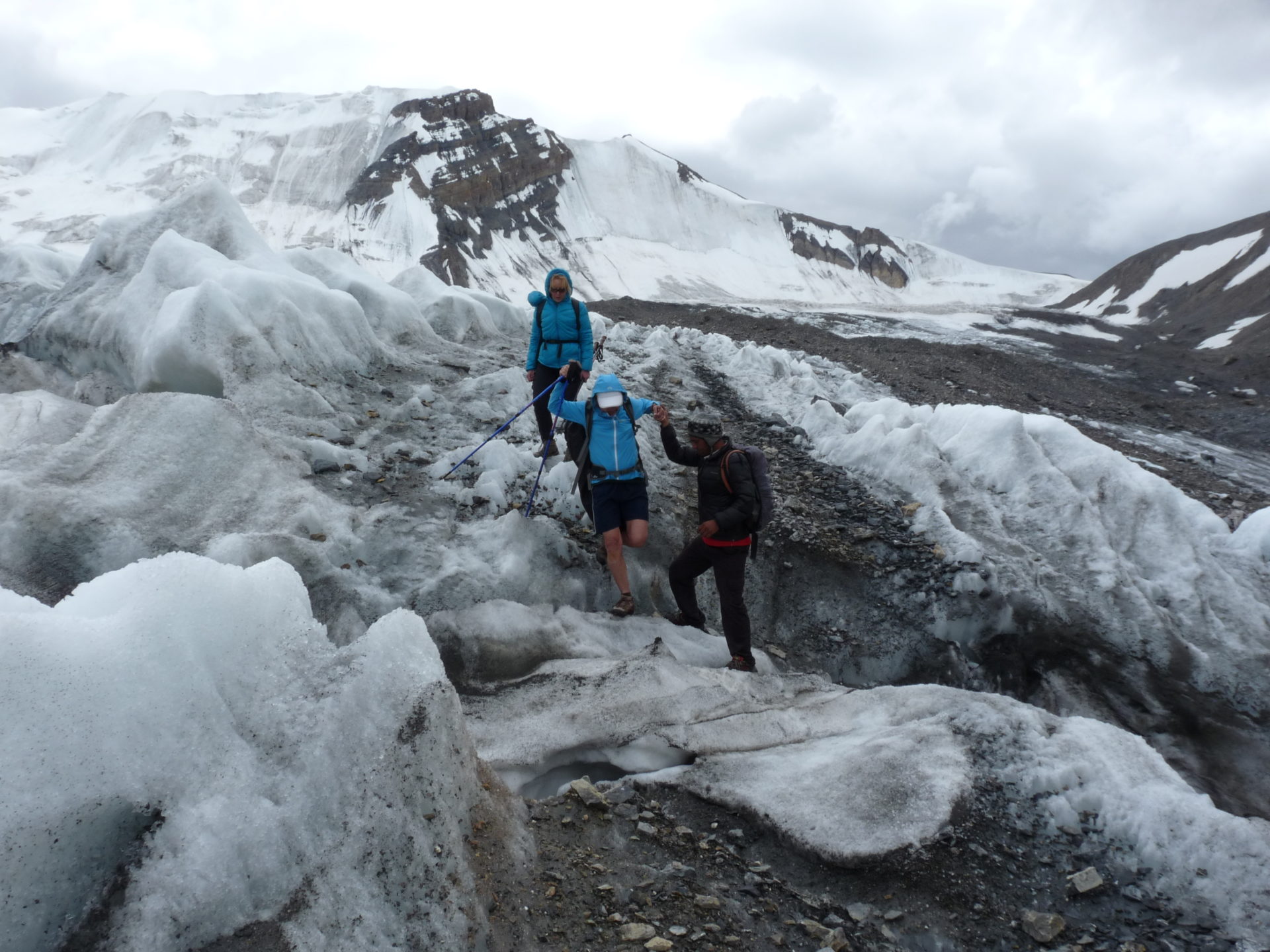
Parang La Glacier 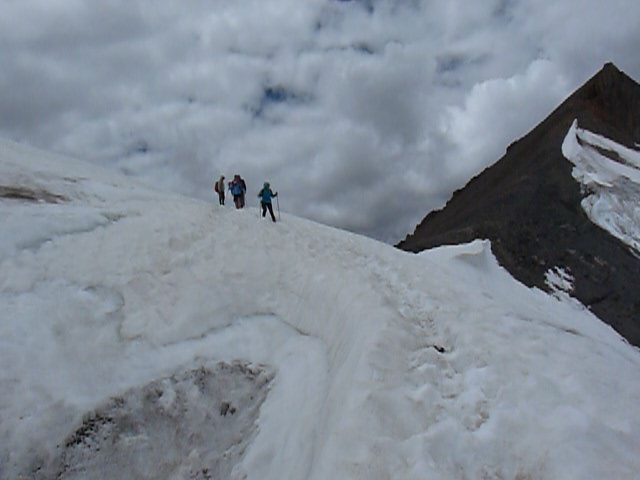
Parang La Glacier 
5570 m Parang La Pass 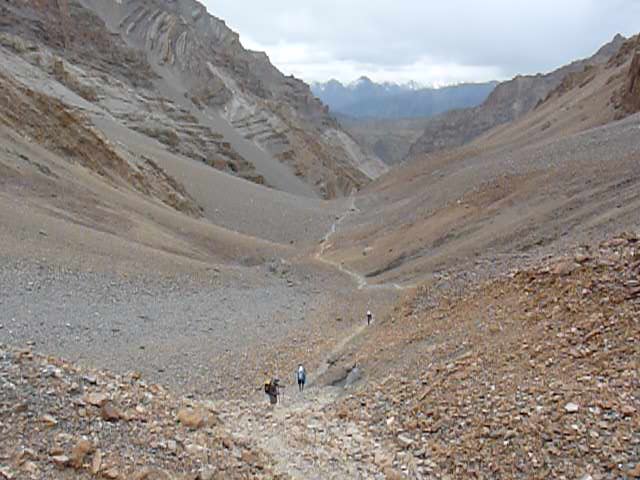
Base Camp Parang La 
Base Camp 5100 m 
River Crossing 
Kibber Tsomori Trek 
Dining Tent 
1. Trekking Day 
Kibber 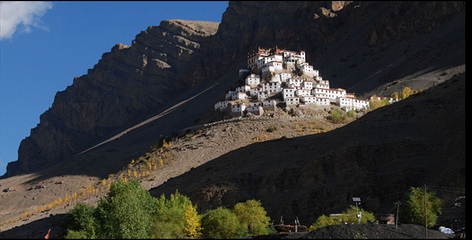
Ki Monastery 
Kibber 
Sheppard Man 
Parang La 
Nomade Camp 
Parang La Pass 
Kibber-Tsomoriri Trek 
Camp 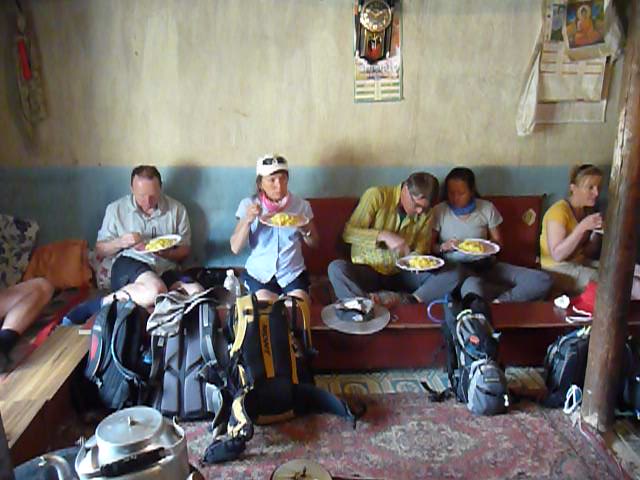
Lunch Local Home 
Pass 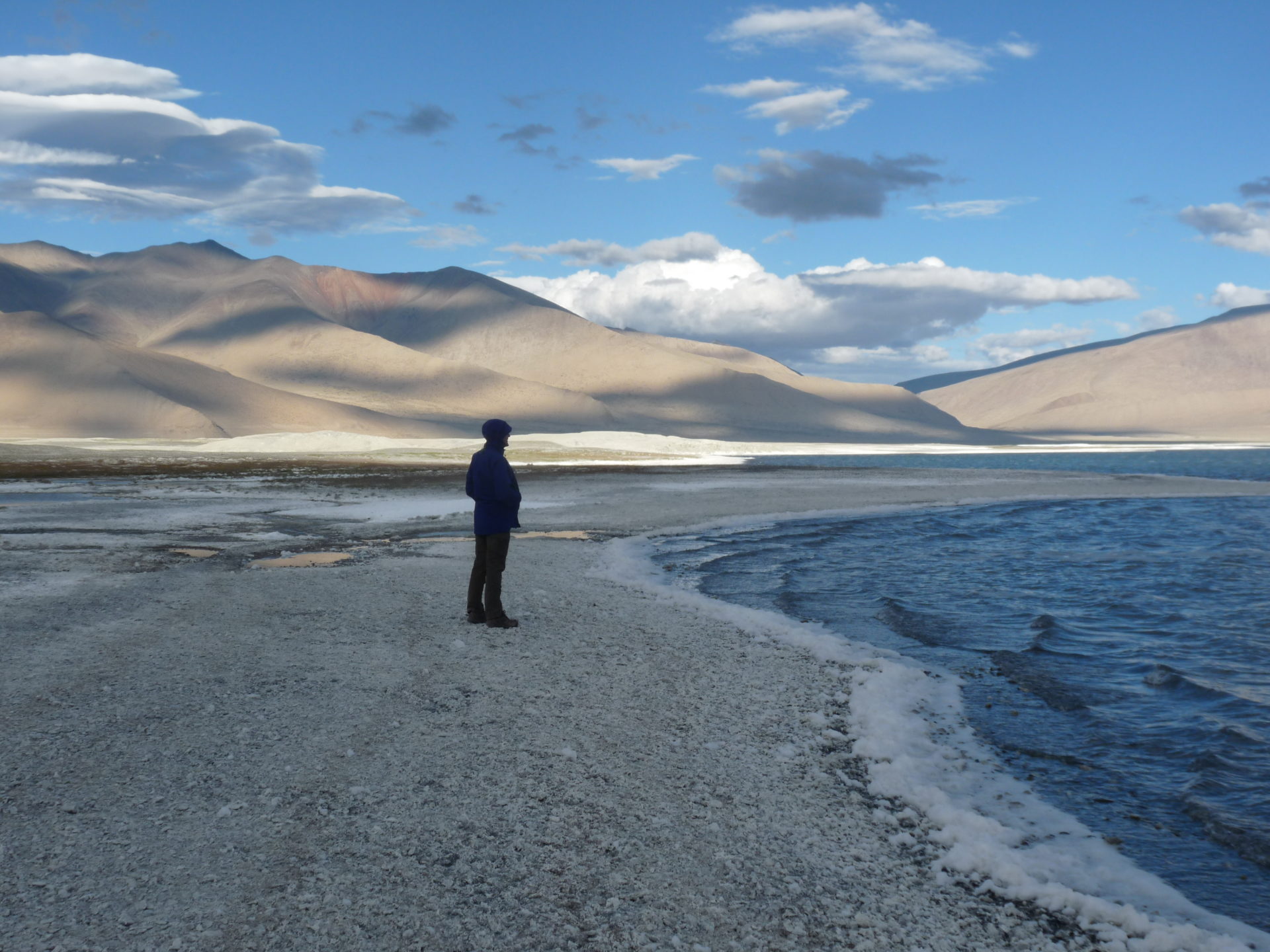
Tsokar lake 
Leh 
Festival in Hemis 
Monastery 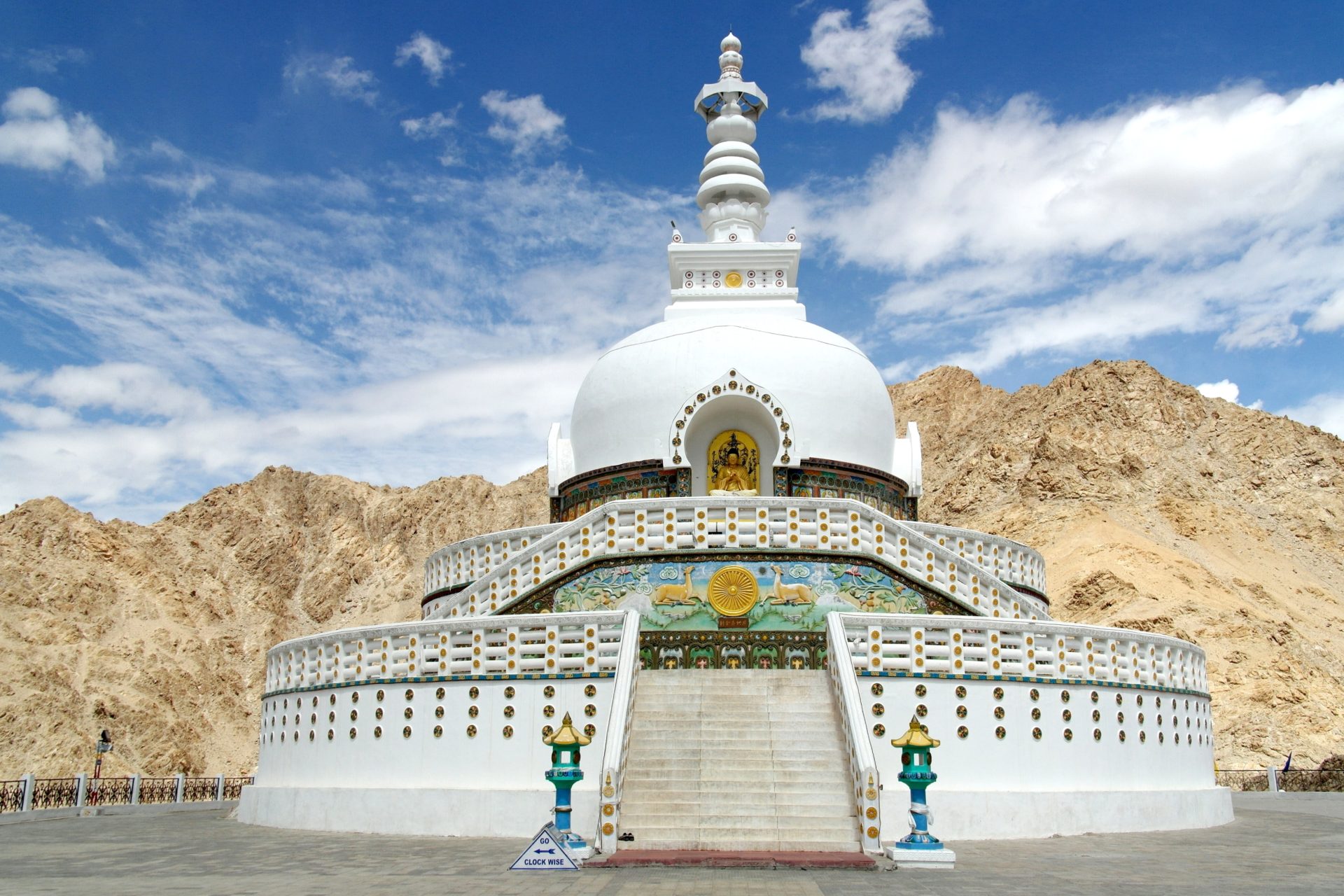
Shanti Stupa 
Leh Palace
Prices and Dates
Fixed departure:
13.07.2025-02.08.2025
12.07.2026-01.08.2026
The trek is possible from June to September
2800 € per Person (min 4 participants)
Tour Info
Requirements
Due to a constant altitude above 4000 m, the length of the daily stages and the 11 trekking days, this trek is quite a challenging trek. Physical health and fitness are a prerequisite!
Information about the Trekking Tours with Chalo! Travels
Mountain guide and trekking team
On all our treks we have at least one (for larger groups of 6 participants two) trained local mountain guide. Our mountain guides have all completed at least the Indian mountaineering training, many of them have also completed the advanced courses.
They are familiar with the trekking routes and know the terrain excellently. All our mountain guides speak English.
In addition, there is a local team consisting of a cook (if the group consists of only two participants, the mountain guide also takes over the tasks of the cook), helpers, horsemen with horses or Nepalese porters, depending on the type of trek.
All our team members have been working with us for years, are very friendly and always strive to provide our guests with a great trekking experience. Their English (besides of the Guide) is rather mediocre or non-existent, but this is not necessarily a hindrance to communicating with them.
Trekking routes
The trekking routes are designed according the skills of our guests and are all feasible for a person with a good fitness level, unless otherwise mentioned. The daily routes are between five and eight hours long (with breaks) and an average increase of around 500-800 metres of altitude is completed.
In between, rivers may have to be crossed. The paths are partly well developed, but sometimes also almost non-existent. On our trekking routes there are hardly any villages in between, so we will take enough food for the whole tour.
On our treks we cross passes, snow or glaciers. On steep slopes, we have safety equipment with us.
Daily routine (Depending on the length and intensity of the trek, the times may vary)
7: 00 am Get up with Tea
7:30-8:30 am Breakfast
7:00-9:30 am Dismantling of the camp
8:00- 9:30 am Start Trek
1:00 pm Lunch on the way
3:00-5:00 pm Arrival at the camp and camp construction
3:30-5:30 pm Snacks
7:00 pm Dinner
Altitude and altitude sickness
Altitude sickness is a very important topic that should not be underestimated, especially during our trekking tours in the Indian Himalayas. At altitudes above 3500 m, our body has to slowly get used to the low air pressure, which also causes less oxygen to enter our lungs. The first signs of altitude sickness are headaches, which are accompanied by dizziness, nausea, insomnia and loss of appetite. It becomes problematic when water accumulates in the lungs and brain and edema occurs. Then only the immediate descent to lower altitudes will help. To prepare for the heights on our treks, we will either spend a few nights at high altitudes before the trek or slowly ascend during the trek to acclimatize. If we notice that there are problems with our guests (each person is otherwise able to acclimatize, regardless of age, gender and fitness level), it may happen that either the entire group or the concerned participant descends/returns with a team. In addition, it makes sense to take an emergency drug for altitude sickness. For this, it is best to consult the pharmacy or the travel doctor. For certain treks we will also have oxygen with us.
Luggage
Each trekking participant is responsible for his own clothes and personal belongings. Depending on the trek, we are either with horses or porters. If we have load horses, one bag per participant can be loaded onto the horse. In the case of treks with porters, all personal luggage must be carried independently. Tents, sleeping bags, mattresses and food are carried by our porters.
For trekking tours with horses, a day backpack with space for the lunchbox, a water bottle and warm overcoat clothing should be taken with you. Here to the complete packing list for our trekking tours.
Packing list for trekking tours
- sleeping bag at least -10°C
- large backpack or soft carrying bag so that the load animals can carry the luggage
- Small carrying backpack for the day approx. 30-40 l with rain protection
- flashlight/headlamp
- 2 refillable water bottles
- hiking poles
- passport and passport copy
- camera with spare battery and memory card
- headgear as sun protection
- Good Sunglasses
- cap
- Scarf, Buff
- Gloves
- wind-proof trekking pants
- trekking pants
- Functional Underwear Long
- hiking boots
- socks thick and thin
- sneakers, sandals and/or slats
- windbreaker
- Warm Jacket
- fleece sweater/jacket
- Tshirts
- sunscreen, lip balm min. Protection 40
- fat cream
- water purification tablets (boiled and filtered water is provided)
- own medications for headaches, nausea, digestive problems, colds)
- bubble patches and dressing material
- own hygiene articles
- Toilets Paper
- hand disinfection
Meals
During the trek there will be a vegetarian full catering. Water is either boiled or we have a water filter with us.
Breakfast (daily selection):
- Coffee/Tea
- Oatmeal porridge/muesli/cornflakes/Indian porridge
- Indian breakfast
- Sliced fruit/vegetables
Lunch (mostly lunchbox), sometimes warm in the camp
- Sandwiches/Indian (rice, chapati, vegetables)/potatoes
- Juices
- Chocolate
- Fruit
Snacks
- Tea/coffee
- Cookies
- French fries/Indian snacks
Soup
Dinner (depending on the length of the Trek mix of Indian/Chinese/Continental)
- Vegetable dish
- Lentil dish
- Rice/noodles
- Chapati
- Salad
- Dessert
Accommodation and camp
We have very comfortable and spacious two-man tents. Our mattresses are practical but simple if there are problems with sleeping on hard surfaces, please take your own mattress with you or order from us. Our sleeping bags are freshly washed and have a very good quality with comfort zone up to -5°C/extreme zone up to -20° C. It is recommended to bring personal indoor sleeping bags.
In addition, we have a spacious dining tent with tables and chairs, a kitchen tent for the team and a toilet tent. For treks up to 4 people, the kitchen tent can also act as a dining tent at the same time.
For trekking tours with porters, we will take our smaller, lighter tents with us and do without a toilet tent.
Weather
In the Himalayas, temperatures fluctuate widely. While it can get warm up to 25°C during the day and the sun is not only warming, but also very intense (sun protection is a must), it can also cool down significantly below the minus-grade at night, especially in the months end of September and October, as well as in June. There may also be weather changes with snow on the passes.
-
5
Überschrift
Lorem ipsum dolor sit amet, consetetur sadipscing elitr, sed diam nonumy eirmod tempor invidunt ut labore et dolore magna aliquyam erat, sed diam voluptua.






